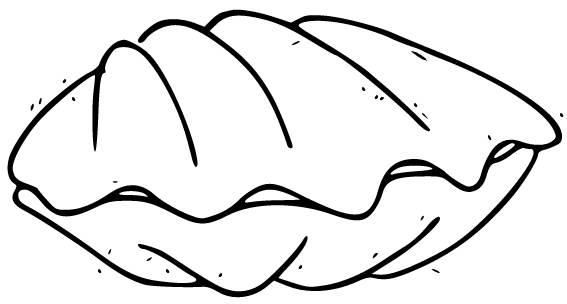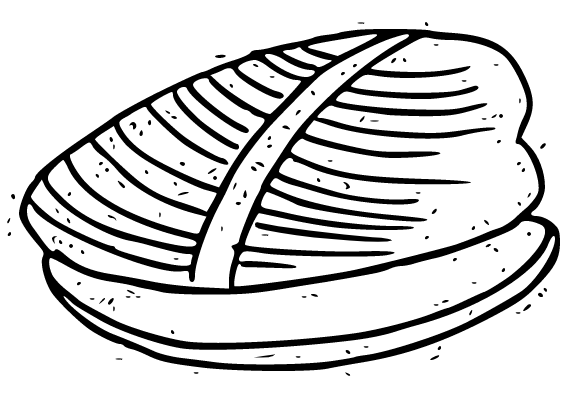-

-
The Discerning Mollusk's Guide to Arts & Ideas
-


think it was at the Etel Adnan exhibit at the Guggenheim that I lost it. I lost it again. Again for good. Finally. I lost it again on non-representational art. Sure, Adnan is a genius of sorts—poet, essayist, painter—but that doesn’t mean her paintings succeed. I’m not sure non-representational art ever does succeed.
Liz and I were there together, and we were talking about success in the arts as we slowly spiraled up to the Kandinsky show, which was the main show, the one we were actually there to see. The Adnan show was something like an opening act. In the Guggenheim. The way you wander up the spiral gallery. For a few spins, Adnan; and then the rest, Kandinsky. Kandinsky, of course, is also non-representational. But his work is somehow different. Perhaps it’s not non-representational. Perhaps it’s merely abstract. They say he could hear color, Kandinsky . . . But we would get to Kandinsky when we got to Kandinsky. For now, we were winding our way through Etel Adnan.
“It’s difficult,” she said, “to succeed.”
I agreed.
“Some things are harder than others,” she said.
I agreed again.
“The long line in poetry,” she said, “the personal essay, non-representational art. It’s all very difficult.”
I agreed, “Everything. Life is difficult. Taking out the trash is difficult. Cleaning your apartment, getting off the couch . . .”
“But what is it that makes art successful?” she said.
“You sound pretentious,” I said.
“We’re at the Guggenheim, for gods sakes . . . what are we supposed to talk about? It’s not easy.”
“No.” I agreed again.
“Well what do you think, then?”
“About what?”
“What makes art successful?”
“No idea.”
“Come on . . .”
“Okay, fine . . . I guess it’s tricky,” I said. “I always think of that Giacometti quote. Something about how his sculptures were never what he had hoped to make, but the result of failed attempts at making what he hoped to make.”
“Was that the quote? That sounds like Picasso: ‘I am always doing what I cannot do.’”
“I don’t know. It’s something like that. Anyway, it’s tricky defining success in general, and especially in the arts.”
“Sometimes it’s enough just to finish something.”
“I guess,” I said. “You mean, just to have completed a project is an accomplishment in and of itself?”
“That’s what I said, I think.”
“Like just to have cleaned the apartment is something to be proud of.”
“Sure, sort of. It seems like success is often predicated on the parameters inherent in the project. That the artist works toward. Whether the constraints they put on the work, or what they hope to get out of a work . . . Etel Adnan, for instance, is working within certain parameters, and she’s playing within those parameters. And, as viewers, if we know what the parameters are, then we can see the degree to which each painting is successful.”
We were looking at a painting of a mountain. There were many of these. We stepped closer. It was one of a series of colorful, abstract shapes loosely implying Mt. Tamalpais. We knew this from a placard on the wall. We hoped to be moved. It did help us to know what she was looking at, what she was, to some extent, after. This particular painting was representational. Abstract, but representational. It represented Mt. Tamalpais. We identified a sort of inherent logic in the series, different ways of seeing, or portraying, that particular mountain, Mt. Tamalpais.
“But hasn’t Cezanne already done this exact thing?” I said.
“Yes,” she agreed.
“And he had already done it when Adnan did it . . .”
She agreed again.
“And to great effect,” I said.
And she agreed.
“I would say with great success even.”
“Yes, though I don’t know if Cezanne would agree. He died poor,” she said, “and unappreciated by the public.”
“By which I take it you mean he died a great success.”
“That’s one way of looking at it.”
We kept looking at the paintings. We tried to just let them happen to us. To let them be. We were walking slowly past them, up the spiral hall, around the spinning museum. There must’ve been over fifty images of the mountain. At some point we got to one that was black and white. It was black and white like an ink painting. Like a Japanese ink painting. Like sumi-e. And I said, dumbly, “look.” But there was no need for me to say that. She was already looking. We were in an art museum, of course she was looking. That’s what we were there for. We looked for a few minutes. It was very moving. I wasn’t sure why.
Adnan had died recently, just as the show opened at the Guggenheim. She died in Paris. It said so on one of the placards near the painting that was like an ink painting. We looked a few minutes longer. It wasn’t the fact that she’d died that made the black and white painting so moving. At least, I didn’t want to think so.
“It’s not that she died,” she said, reading my mind, “it’s that she was alive, and while she was alive, she painted that mountain again and again.”
“It’s sort of meaningless in a way, isn’t it? The things that obsess us.”
She agreed.
“It could be anything. A mountain, an author, a celebrity, someone’s death . . . the trick, I guess, is to be obsessed by something, anything.”
She agreed (again).
“Success has nothing to do with it . . . even non-representational art can be obsessed with something: color, line, composition . . . it doesn’t really matter what it is.”
“No,” she said. “I don’t think it does.” We looked a little longer at the ink painting. Then she said, “Let’s go back to the beginning.”
I agreed, and we did.
“Someone may have composed music after Bach, but they didn’t need to.”—A.R. Ammons.
Ican see that I’m ill. Full of spite, spleen, spume. I’m sure you can see it, too. I can see that I’m ill, but I can’t do anything about it. I’m tired, I guess. Someone says, “I love ballet,” and my stomach starts to ache. Someone at the café mentions they’ve signed up for a poetry class, I become nauseous. Another person is interested in joining a ceramics studio, taking lessons, renting a kiln. They say “I don’t know, I just feel like making art.” I leave the café. I can’t hide my distaste. I can see that I’m ill, but I can’t do anything about it.
It wasn’t always like this. Or rather, it used to be less acute than this. When I was younger, and had seen less. But now I’ve had enough, I’ve seen too much, too much of the same thing. I’m bloated. I’m bloated from eating art. I’m bloated from eating bad art.
Don’t get me wrong. The great art still inspires, still makes me feel alive, still enriches my life. But how much great art can there be in a world? To say nothing of a small town. A small town that thinks it’s a great art town. The answer, unfortunately, is “not much.” But what few works of great art that do exist are surely enough. Aren’t they?
An insufficient amount of great art is not the problem. Finding great art might be a challenge, but not an insurmountable one. One simply has to return to what is great. Again and again if necessary. Find Caravaggio. If you’re not in Rome, find him in a book at the library if you have to. Buy a poster of Sick Bacchus and hang it on the dining room wall. Look how haunted he is, how jaundiced, how perverse! Bacchus-cum-Caravaggio. Look at how he massages those grapes. How he holds them near his mouth. Will he eat them? Or just fondle them? One goes to see Sick Bacchus like one would go to an altar to worry over the meaning of life.
The tragedy (the illness) is not a lack of great art, but an excess of bad. A surplus of garbage that every city and town seems obsessed with producing, with overproducing. Whose idea was that? Why and to what end? This surplus of bad art has the same effect on great art that mis- and disinformation have on the truth: it desecrates and muddles, confuses, undermines and ruins.
There was a time when every town had a factory, and pubs for the workers to go to and forget themselves, to lose their money and their misery. Drunken song filled the cities. Sad, perhaps, but true. Not ideal. Not utopian. But true and tragic and rich.
Now no one works and every town is full of art galleries. Art galleries are even being put in buildings that were once factories. And no one’s singing. And, of course, you can’t have an empty art gallery, so you need to fill it. Fill it up with art. “We need more art!” Don’t have enough art? No worries. We’ll fill it with gifts, postcards, stickers, memorabilia, objectifications of whales, moose, aspen trees, space needles and Eiffel towers. We’ll say it’s art. No one cares. No one knows the difference.
What the hell is going on?
A hundred and fifty years ago there was one art event in the entire world, in the entire western world, at least: the Salon de Paris. Then, in response, those rejected by the Salon de Paris staged the even better Salon de Refusés, where modernism could show itself, could argue against and boldly reject the academic art that had persisted for centuries. There were essentially two ways to exhibit your art. Either through the Académie royale de peinture et de sculpture, or through the Salon de Refusés, which the Impressionists formed to reject (refuse) the tyranny of the Academy.
That’s it. There were two Exhibitions. In the world.
Now every Duluth and Davenport has not only its arts festivals, but its museums to fill. And most of these towns have not only a Museum of Art, but a Museum of Modern Art, and a Museum of Contemporary Art (no matter that they all might show the same works at different times). My town, the town where I live, has all three of these and also a Museum of Arts and Industries, a Museum of History and Industries, a Nordic Heritage Museum, a Native American Museum, an Asian American Museum, a Museum of Pop Culture, a Flight Museum, a Fiber Arts Museum, and several others I don’t have the stomach to list. We even have (and I wish I was kidding) a Museum of Museums. You might think the owners of the Museum of Museums are being ironic, but unfortunately, they’re not.
I can see that I’m ill, but can’t do anything about it. I’m sorry. Maybe I should take a class at the community college, or one of the dozens of privately funded non-profit art schools in my town, the town where I live. Maybe I should study pointillist painting for a few months and have my first solo show at the café on the corner, or the café down the street, or any of the hundreds of cafés in town that are always (somehow, regeneratively) full of art! Where does it all come from? When will it all stop!

Thomas Walton is the author of Good Morning Bone Crusher! (Spuyten Duyvil 2021), All the Useless Things Are Mine (SM, 2020), The World Is All That Does Befall Us (Ravenna Press, 2019), and, with Elizabeth Cooperman, The Last Mosaic (SM, 2018). He works as an assistant clerk in the Department of Hairy Affairs in Tubdrain's West Coast offices.